jar546
Forum Coordinator
Like many members of The Building Code Forum, my interest in World War II has been a long-standing one, filled with countless hours spent watching documentaries and films specific to that era. The sheer scale of the war, its origins, the multitude of actions, and the complex political environment of the time have always captivated my imagination.
My recent visit to New Orleans offered an opportunity to explore the National WWII Museum, a place I had long wanted to visit. For anyone with even a passing interest in WWII, this museum is a treasure trove of information and artifacts, providing a deep dive into one of history's most pivotal periods.
To truly appreciate the National WWII Museum, I'd recommend setting aside a full day, if not more. The museum's layout and the sheer volume of exhibits demand time for a thorough exploration. What struck me most was not just the extensive collection of artifacts and displays, but also the depth and richness of the information presented.
Each exhibit at the museum is a portal into the past, offering insights into the many facets of the war. From the strategic decisions of world leaders to the daily struggles of soldiers on the front lines, the museum covers it all. But perhaps what is most compelling is the focus on the human aspect of the war – the stories of individuals whose lives were irrevocably changed by the global conflict.
What I learned during my visit was not just about military strategies or political alliances, but about the immense human cost of the war. It’s a poignant reminder of the sacrifices made not only by soldiers but also by the civilian populations, the merchant marines, and others who played crucial roles in the war effort. The civilian casualties and the impact on societies across the globe are aspects of WWII that we often overlook, yet they are perhaps the most important to remember.
The museum also highlights how societies mobilized for war, with every aspect of civilian life being affected. From rationing to war bond drives, everyone had a part to play. This sense of collective effort and sacrifice is something that resonates even today.
As I walked through the halls of the museum, absorbing the stories and the silent echoes of the past, I was struck by a profound sense of gratitude. Gratitude for the sacrifices made by countless individuals during those turbulent years, and a deep appreciation for the peace and stability that most of us enjoy today.
In conclusion, a visit to the National WWII Museum is not just about revisiting history; it’s a journey into the depths of human endurance, sacrifice, and resilience. If you have the chance, I highly encourage a visit – and like me, you might find yourself planning a return trip to uncover even more.
Lastly, I want to emphasize that this post is a reflection on history and humanity, and is not intended to provoke political discourse. It’s important to respect the policy of The Building Code Forum and engage in discussions that foster understanding and respect. Let’s remember the lessons of the past to build a more peaceful and compassionate future.
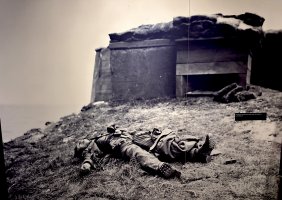
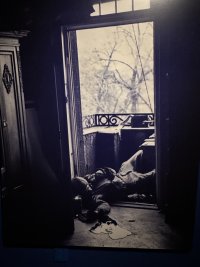
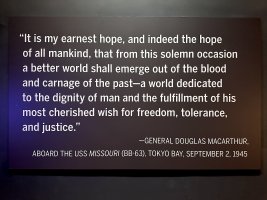
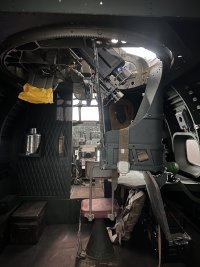
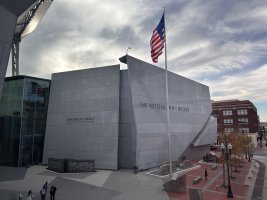
My recent visit to New Orleans offered an opportunity to explore the National WWII Museum, a place I had long wanted to visit. For anyone with even a passing interest in WWII, this museum is a treasure trove of information and artifacts, providing a deep dive into one of history's most pivotal periods.
To truly appreciate the National WWII Museum, I'd recommend setting aside a full day, if not more. The museum's layout and the sheer volume of exhibits demand time for a thorough exploration. What struck me most was not just the extensive collection of artifacts and displays, but also the depth and richness of the information presented.
Each exhibit at the museum is a portal into the past, offering insights into the many facets of the war. From the strategic decisions of world leaders to the daily struggles of soldiers on the front lines, the museum covers it all. But perhaps what is most compelling is the focus on the human aspect of the war – the stories of individuals whose lives were irrevocably changed by the global conflict.
What I learned during my visit was not just about military strategies or political alliances, but about the immense human cost of the war. It’s a poignant reminder of the sacrifices made not only by soldiers but also by the civilian populations, the merchant marines, and others who played crucial roles in the war effort. The civilian casualties and the impact on societies across the globe are aspects of WWII that we often overlook, yet they are perhaps the most important to remember.
The museum also highlights how societies mobilized for war, with every aspect of civilian life being affected. From rationing to war bond drives, everyone had a part to play. This sense of collective effort and sacrifice is something that resonates even today.
As I walked through the halls of the museum, absorbing the stories and the silent echoes of the past, I was struck by a profound sense of gratitude. Gratitude for the sacrifices made by countless individuals during those turbulent years, and a deep appreciation for the peace and stability that most of us enjoy today.
In conclusion, a visit to the National WWII Museum is not just about revisiting history; it’s a journey into the depths of human endurance, sacrifice, and resilience. If you have the chance, I highly encourage a visit – and like me, you might find yourself planning a return trip to uncover even more.
Lastly, I want to emphasize that this post is a reflection on history and humanity, and is not intended to provoke political discourse. It’s important to respect the policy of The Building Code Forum and engage in discussions that foster understanding and respect. Let’s remember the lessons of the past to build a more peaceful and compassionate future.





